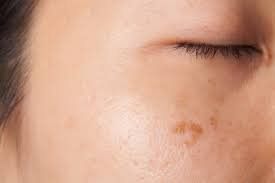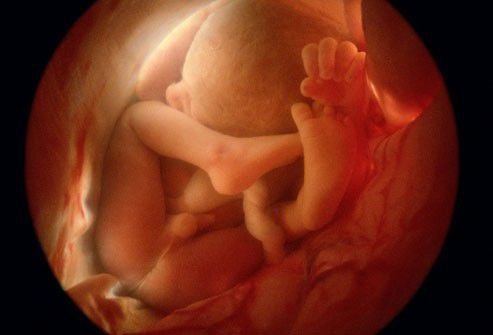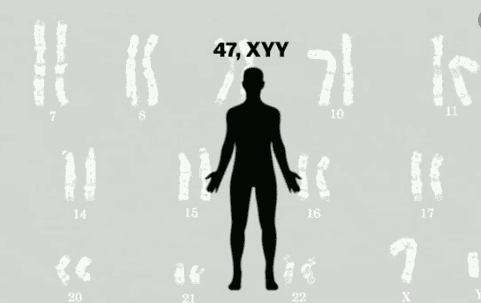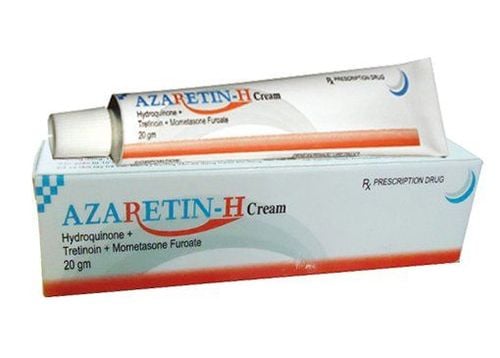This is an automatically translated article.
Bloch-Sulberger syndrome is a type of genetic syndrome that severely affects the skin, hair, teeth, and central nervous system. This condition is characterized by blistering blisters on the trunk and limbs shortly after birth. These blisters will heal over time, but they leave behind marks of hyperpigmentation.
1. Causes of Bloch-Sulberger . syndrome
This is a type of ectodermal dysplasia with abnormalities in tissues or organs of ectodermal and neurological origin. Inherited disorder caused by an X-linked dominant skin gene.
Mutation of the IKBKG gene responsible for the production of proteins that help protect cells and prevent self-destruction. They cause abnormalities related to nerves, eyes as well as related to hair, teeth or nails...
Inheritance of an X-linked dominant gene.
- IP1 (70%): not familial, usually due to mutations on the X chromosome of the father's sperm and then passed on to the daughter.
- IP2 (30%).
Male carriers often die in the fetus. Hence > 95% of patients are female. Male patients can be encountered in 2 cases: due to genetic mutations that cause disease in the early stages of fetal development, or because the male has Klinefelter syndrome (47XXY).
Bloch-Sulberger syndrome is caused in women by abnormal X tissue that is inactive by cells with mutated X chromosomes, which deselect during parturition.
The disease is more common in white people than in other races. It is a relatively uncommon disease. There are more than 700 cases described in the literature, but in fact the number of patients may be higher because there are patients with atypical forms that are not detected.

Hội chứng Bloch-Sulberger
2. Manifestations of Bloch-Sulberger . syndrome
2.1 Skin manifestations
Appears from the first week, rarely after the 2nd month.
There may be no dermatologic manifestations, only visceral manifestations (especially in women with first-degree relatives. patient), then the diagnosis is not excluded.
Divided into 4 stages, but:
May be missing 1, 2 stages, At a time, there may be clinical manifestations of many stages, There may be 1 stage of erythema before stage 1 (Erythema toxicum) neonatorum), but very rarely. Stage 1: Blisters, blisters are seen in 90-95% of patients
Red macules, red patches, then blisters, tight blisters, containing clear fluid. Location: whole body but rarely on face. Lesions follow the Blaschko lines. Lesions grow in waves. Each episode of blistering lasts a few weeks, then disappears. Subsequent waves may grow in the same location or in another location. Lesions may be widespread throughout the body. This stage usually ends before 6 months of age, but lesions can reappear later when the child has a fever. Stage 2: Tuberculosis
Seen in 70-80% of patients. Lesions last shorter and milder than stage 1. The warts are mainly on the extremities, especially the fingers, backs of hands, feet, ankles, lesions are often arranged in bands. May not have grown at the site of the previous blister. Usually appears in the first 2 months and ends before 3 years of age. Stage 3: Hyperpigmentation
Seen in 90-98% of patients. The degree of hyperpigmentation varies: from discreet pigmented bands in the folds to widespread pigmented lesions. Color: greenish gray to brown, typical lesions in the "mud-throwing" pattern. It may be present at the beginning, or appear after the inflammation subsides. Inflammatory lesions may appear on areas of already pigmented skin. Hyperpigmentation usually appears within the first 6 months. Pigmentation fades as the patient grows older. Stage 4: Skin atrophy, hypopigmentation seen in 30-75% of patients.
Seen in adult women. Are atrophic, hypopigmented bands along the back of the thigh, lower leg, or shoulder or arm; rarely seen in the body. In lesions there is hair loss, decreased sweating. 2.2. Nail manifestations
Nail dystrophy occurs in 40% of patients. Clinical manifestations vary from mild nail ripples to severe nail dystrophy resembling onychomycosis.
2.3. Hair manifestations
Approximately 25% of patients have hair loss, usually in the apical region. Maybe stiff, dull hair.

Rụng tóc là có thể là biểu hiện của hội chứng Bloch-Sulberger
2.4 Manifestations in teeth
Manifestations in 80% of patients. Delayed teething, missing teeth, triangular teeth, baby teeth that persist into adulthood...
2.5. Ocular manifestations
Presented in 40% of patients. Strabismus, cataract, small eyeball, optic nerve atrophy, retinal vascular disease, retinal detachment, can cause blindness...
2.6. Central nervous system manifestations
Presented in 25% of patients. Slow motor development, mental retardation, spastic paralysis of 2 limbs or extremities, baby brain, epilepsy...
3. Treatment for Bloch-Sulberger . syndrome
Treatments for Bloch-Sulberger syndrome are established based on the presenting symptoms in the patient. Treatment of Bloch-Sulberger syndrome is often symptomatic and supportive.Skin abnormalities in patients with Bloch-Sulberger syndrome usually resolve on their own without treatment. In cases of retinal detachment susceptible to neovascularization, cryotherapy and laser photocoagulation may be performed. Dental problems are handled by a dentist; Dental implants based on oral condition. Consultation with a speech pathologist and a pediatric dietitian may be required if the patient has speech and chewing difficulties. Hair problems may require dermatological treatments. Oral medications are often recommended to manage neurological problems such as seizures, mild paralysis, and muscle spasms.

Uống thuốc theo chỉ định của bác sĩ
The following tips can help you prevent Bloch-Sulberger syndrome:
Get genetic counseling before planning a pregnancy, especially if there is a family history of abnormalities in the syndrome. genetic . Eye examination: should be performed on a regular basis in patients affected by this syndrome to prevent ocular complications. We hope the information provided above has helped you understand Bloch-Sulberger syndrome. Thereby, there are treatment and preventive measures at the beginning of this syndrome.
Periodic health check-ups help to detect diseases early, so that there are treatment plans for optimal results. Currently, Vinmec International General Hospital has general health checkup packages suitable for each age, gender and individual needs of customers with a reasonable price policy.
Results of the patient's examination will be returned to the home. After receiving the results of the general health examination, if you detect diseases that require intensive examination and treatment, you can use services from other specialties at the Hospital with quality treatment and services. outstanding customer service.
Please dial HOTLINE for more information or register for an appointment HERE. Download MyVinmec app to make appointments faster and to manage your bookings easily.













